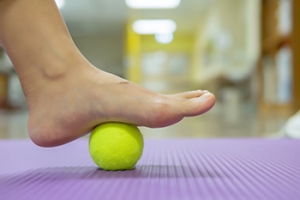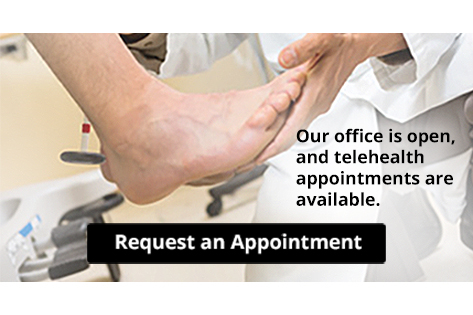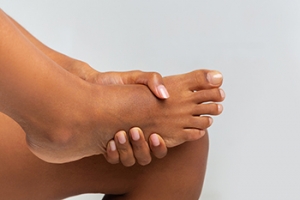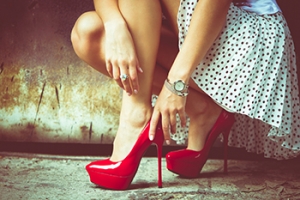Items filtered by date: January 2023
Yoga and the Feet

The health of our feet can play a significant role in increasing the efficacy and ease of our physical exercises and workouts. Interestingly, our feet can largely influence other parts of the human body and their performance during yoga sessions. Yoga is a popular form of exercise that disciplines the mind, body, and spirit through the practice of different yoga poses. When an individual engages in yoga with healthy feet, this can positively impact the tone of the pelvic floor. This is because the feet are linked with and mirror the pelvic floor during yoga sessions. Additionally, yoga enthusiasts who have strong and resilient feet can strengthen their perineal muscles. Needless to say, those who practice yoga can reap many benefits from simply strengthening their feet. Contact a podiatrist today for more information about this subject.
Exercising your feet regularly with the proper foot wear is a great way to prevent injuries and build strength. If you have any concerns about your feet, contact Dr. Kenneth Donovan from Advanced Care Foot and Ankle. Our doctor can provide the care you need to keep you pain-free and on your feet.
Exercise for Your Feet
Exercise for your feet can help you gain strength, mobility and flexibility in your feet. They say that strengthening your feet can be just as rewarding as strengthening another part of the body. Your feet are very important, and we often forget about them in our daily tasks. But it is because of our feet that are we able to get going and do what we need to. For those of us fortunate enough to not have any foot problems, it is an important gesture to take care of them to ensure good health in the long run.
Some foot health exercises can include ankle pumps, tip-toeing, toe rises, lifting off the floor doing reps and sets, and flexing the toes. It is best to speak with Our doctor to determine an appropriate regimen for your needs. Everyone’s needs and bodies are different, and the activities required to maintain strength in the feet vary from individual to individual.
Once you get into a routine of doing regular exercise, you may notice a difference in your feet and how strong they may become.
If you have any questions please feel free to contact one of our offices located in Warren, Livingston, and Toms River, NJ . We offer the newest diagnostic and treatment technologies for all your foot and ankle needs.
Common Causes and Symptoms of Heel Pain
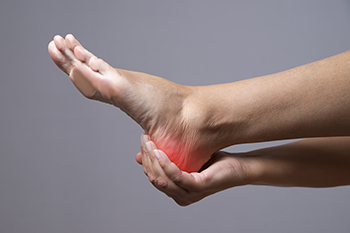
The heel bone, or calcaneus, is the largest of the 26 bones in the foot. Too much stress on the heel, such as repeatedly pounding the feet on hard surfaces, can cause soreness. The most common cause of heel pain is plantar fasciitis, an inflammation of the band of tissue that runs from the toes to the heel along the sole of the foot. Other sources of heel pain are wearing shoes that lack ample cushioning and shock absorption, running too far, and landing awkwardly on the feet. Tightness in the Achilles tendon, as well as biomechanical difficulties like flat feet and overpronation can also be causes of heel pain. Additional causes of heel pain include heel spurs, arthritis, and stress fractures. Depending on the cause, symptoms include pain, tenderness, swelling, numbness, and stiffness. If you are experiencing regular bouts of heel pain, it is a good idea to consult a podiatrist for an examination, a diagnosis, and an appropriate course of treatment.
Many people suffer from bouts of heel pain. For more information, contact Dr. Kenneth Donovan of Advanced Care Foot and Ankle. Our doctor can provide the care you need to keep you pain-free and on your feet.
Causes of Heel Pain
Heel pain is often associated with plantar fasciitis. The plantar fascia is a band of tissues that extends along the bottom of the foot. A rip or tear in this ligament can cause inflammation of the tissue.
Achilles tendonitis is another cause of heel pain. Inflammation of the Achilles tendon will cause pain from fractures and muscle tearing. Lack of flexibility is also another symptom.
Heel spurs are another cause of pain. When the tissues of the plantar fascia undergo a great deal of stress, it can lead to ligament separation from the heel bone, causing heel spurs.
Why Might Heel Pain Occur?
- Wearing ill-fitting shoes
- Wearing non-supportive shoes
- Weight change
- Excessive running
Treatments
Heel pain should be treated as soon as possible for immediate results. Keeping your feet in a stress-free environment will help. If you suffer from Achilles tendonitis or plantar fasciitis, applying ice will reduce the swelling. Stretching before an exercise like running will help the muscles. Using all these tips will help make heel pain a condition of the past.
If you have any questions please contact one of our offices located in Warren, Livingston, and Toms River, NJ . We offer the newest diagnostic and treatment technologies for all your foot and ankle needs.
The Importance of Moisturizing the Feet
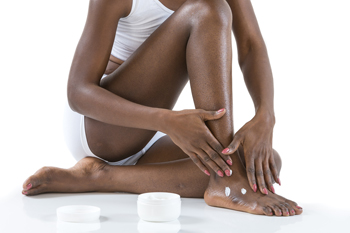
Taking care of the feet on a daily basis is a key part of maintaining your overall health. One of the most important ways in which an individual can care for and pamper their feet is by keeping them sufficiently moisturized. Keeping the feet moisturized protects against dry and cracked skin that might lead to conditions such as cracked heels. People may choose to apply a wide range of different moisturizers to their feet. Using moisturizing products like a glaze for the heel can help ensure that your skin on the feet feel smooth to the touch. Glazes or moisturizers may contain honey, aloe, and other moisturizing ingredients. While not all moisturizers may help you successfully get rid of calluses immediately, moisturizing the feet can nonetheless be helpful and beneficial. If you are someone that wants to take care of your feet, contact a podiatrist today about moisturizing the feet.
Proper foot care is something many older adults forget to consider. If you have any concerns about your feet and ankles, contact Dr. Kenneth Donovan from Advanced Care Foot and Ankle. Our doctor can provide the care you need to keep you pain-free and on your feet.
The Elderly and Their Feet
As we age we start to notice many changes in our body, but the elder population may not notice them right away. Medical conditions may prevent the elderly to take notice of their foot health right away. Poor vision is a lead contributor to not taking action for the elderly.
Common Conditions
- Neuropathy – can reduce feeling in the feet and can hide many life-threatening medical conditions.
- Reduced flexibility – prevents the ability of proper toenail trimming, and foot cleaning. If left untreated, it may lead to further medical issues.
- Foot sores – amongst the older population can be serious before they are discovered. Some of the problematic conditions they may face are:
- Gouging toenails affecting nearby toe
- Shoes that don’t fit properly
- Pressure sores
- Loss of circulation in legs & feet
- Edema & swelling of feet and ankles
Susceptible Infections
Diabetes and poor circulation can cause general loss of sensitivity over the years, turning a simple cut into a serious issue.
If you have any questions please feel free to contact one of our offices located in Warren, Livingston, and Toms River, NJ . We offer the newest diagnostic and treatment technologies for all your foot and ankle needs.
Relief Methods for Cuboid Syndrome
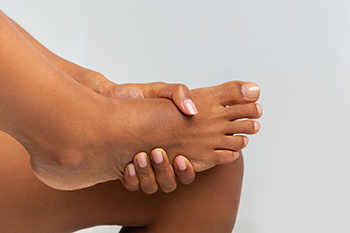
There are several names for the foot condition that is known as cuboid syndrome, such as dropped, locked, or subluxed cuboid. The cuboid bone is located on the outer edge of the foot, under the pinky toe. Cuboid syndrome can happen when gradual stress is placed on the cuboid bone, which may possibly tear the surrounding tendons. This can cause the bone to become out of alignment with the rest of the foot, and it is known to be a common injury among dancers, sprinters, and jumpers. The symptoms that are often associated with this type of injury can include pain on the outside of the foot, which may radiate to the toes and ankles, and the injured area may be swollen. Additionally, many patients can begin to limp and may notice that their entire foot feels weak. Patients can find relief when mild stretches are performed, and wearing shoes that have extra cushioning. If you have pain in this part of your foot, it is suggested that you speak with a podiatrist sooner rather than later who can guide you toward the correct treatment options.
Cuboid syndrome, also known as cuboid subluxation, occurs when the joints and ligaments near the cuboid bone in the foot become torn. If you have cuboid syndrome, consult with Dr. Kenneth Donovan from Advanced Care Foot and Ankle. Our doctor will assess your condition and provide you with quality foot and ankle treatment.
Cuboid syndrome is a common cause of lateral foot pain, which is pain on the outside of the foot. The condition may happen suddenly due to an ankle sprain, or it may develop slowly overtime from repetitive tension through the bone and surrounding structures.
Causes
The most common causes of cuboid syndrome include:
- Injury – The most common cause of this ailment is an ankle sprain.
- Repetitive Strain – Tension placed through the peroneus longus muscle from repetitive activities such as jumping and running may cause excessive traction on the bone causing it to sublux.
- Altered Foot Biomechanics – Most people suffering from cuboid subluxation have flat feet.
Symptoms
A common symptom of cuboid syndrome is pain along the outside of the foot which can be felt in the ankle and toes. This pain may create walking difficulties and may cause those with the condition to walk with a limp.
Diagnosis
Diagnosis of cuboid syndrome is often difficult, and it is often misdiagnosed. X-rays, MRIs and CT scans often fail to properly show the cuboid subluxation. Although there isn’t a specific test used to diagnose cuboid syndrome, your podiatrist will usually check if pain is felt while pressing firmly on the cuboid bone of your foot.
Treatment
Just as the range of causes varies widely, so do treatments. Some more common treatments are ice therapy, rest, exercise, taping, and orthotics.
If you have any questions, please feel free to contact one of our offices located in Warren, Livingston, and Toms River, NJ . We offer the newest diagnostic and treatment technologies for all your foot care needs.
Foot Conditions May Develop From Poorly Fitting High Heels
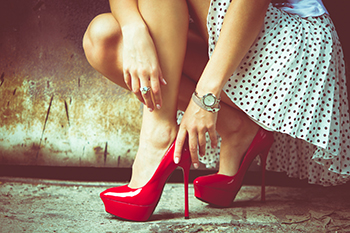
High heels are a popular type of shoe to wear, despite the foot conditions that may develop. Blisters are a common ailment that many women get, and they can occur on the back of the heels, or the sides of the feet. This can happen if the shoe doesn’t fit correctly, and women may use methods such as putting cotton balls in the shoes, or bandages where blisters would develop. Wearing high heels that do not have enough room in the toe area may cause Morton’s neuroma to develop. This is defined as irritation and thickening of the nerve that lies between the third and fourth toes. It can cause severe pain and discomfort, and the pain may be temporarily alleviated when lower-heeled shoes are worn. Additionally, these types of shoes can put stress on the joints and bones, possibly leading to getting a stress fracture. Any type of foot pain that comes from wearing high heels is treated by a podiatrist, and it is suggested that you consult with this type of doctor who can offer relief tactics, and recommend shoes that are better for your feet.
High heels have a history of causing foot and ankle problems. If you have any concerns about your feet or ankles, contact Dr. Kenneth Donovan from Advanced Care Foot and Ankle. Our doctor can provide the care you need to keep you pain-free and on your feet.
Effects of High Heels on the Feet
High heels are popular shoes among women because of their many styles and societal appeal. Despite this, high heels can still cause many health problems if worn too frequently.
Which Parts of My Body Will Be Affected by High Heels?
- Ankle Joints
- Achilles Tendon – May shorten and stiffen with prolonged wear
- Balls of the Feet
- Knees – Heels cause the knees to bend constantly, creating stress on them
- Back – They decrease the spine’s ability to absorb shock, which may lead to back pain. The vertebrae of the lower back may compress.
What Kinds of Foot Problems Can Develop from Wearing High Heels?
- Corns
- Calluses
- Hammertoe
- Bunions
- Morton’s Neuroma
- Plantar Fasciitis
How Can I Still Wear High Heels and Maintain Foot Health?
If you want to wear high heeled shoes, make sure that you are not wearing them every day, as this will help prevent long term physical problems. Try wearing thicker heels as opposed to stilettos to distribute weight more evenly across the feet. Always make sure you are wearing the proper shoes for the right occasion, such as sneakers for exercising. If you walk to work, try carrying your heels with you and changing into them once you arrive at work. Adding inserts to your heels can help cushion your feet and absorb shock. Full foot inserts or metatarsal pads are available.
If you have any questions please feel free to contact one of our offices located in Warren, Livingston, and Toms River, NJ . We offer the newest diagnostic and treatment technologies for all your foot and ankle needs.
